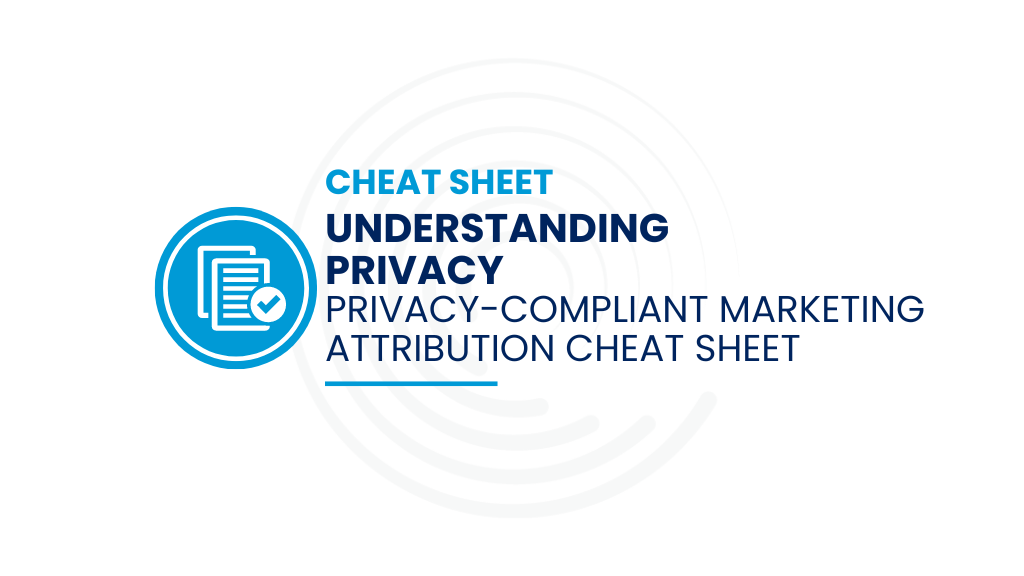Suppose that your best friend set you up on a date. After the date, your best friend asks, “How did it go?”
Since you’re a quantitative marketer, you put a hidden camera in your jacket so that afterward you could evaluate the engagement level of the date (privacy…what’s that?). You share the following results with your best friend:
- Engaging questions: 47 out of 68 attempts.
- Engaging stories: 13 out of 19 attempts
- Laughing at my jokes: 30 out of 33.
- Tasteful physical contact: 11 out of 13.
- Post-date text message: 14 hours, 23 minutes.
- Probability of conversion to second date: 0.79
Notice that the metrics reveal how good the date was for you. Was it as good for your date as it was for you though?
The metrics don’t know. We’d like to think that if the person is interested in round two, it’s because date one was good. But what if they want to go out again in spite of the first date?
Maybe they feel pressure to try again because of their relationship with your best friend. Maybe your best friend described you as “a little like The Big Lebowski: strange on date one, but better on dates two and three.” What if they were lukewarm about the date but went out with someone else the next day (i.e., another vendor), and the date was so bad that it made yours look better?
The ‘engagement’ metrics tell you how good the interaction was for you, not the other person. If it’s not already obvious, we suffer the same problem with advertising and marketing tech.
The solution to this problem has divided the marketing community into two camps: what The New Yorker columnist and author Ken Auletta calls Math Men and Mad Men.
The Math Men, argues Ken, are the engineers and data scientists who want to track prospects 24/7, amass hordes of data, and target ads to individuals, not groups. They want every date to be a tightly tracked, quantitative outing like the one I described. They want to see metrics that are good for the advertiser, and they assume that ‘engagement,’ however they define it, is a positive signal from the buyer.
Is an audience of one realistic – or even desirable – for the public? I don’t hear anyone clamoring for ‘personalized’ movies or books written just for me. Rather, we look at Netflix ratings and Amazon peer reviews as good indicators of how much we’ll enjoy the experience.
Put differently, entertainment and useful information tend to have collective appeal because human beings have more in common than not. The push for personalization is not from a place of, “You’ll enjoy this better,” but rather, “We’ll sell more stuff.”
The Mad Men have a different mindset. They believe that their artistic taste supersedes any ‘scientific’ knowledge of the consumer borne through data. The Mad Men would never take a date to a restaurant (boring, typical). Rather, they’d propose trekking to a hidden hot spring for a dip and picnic on a crisp summer night. The Mad Men approach tries to make the substance of the interaction so good that only problems in distribution and execution can explain a failure. Data be damned if it contradicts that assumption!
Conversely, the skeptical Math Men might say, “Why would you invest that much in one date!? Just make a fail-proof Tinder profile (take a picture with a cute puppy), swipe your way through, and go on as many dates as possible until you get a conversion.”
Put simply, Mad Men think in quality, Math Men in quantity. But are the approaches mutually exclusive? No. Attribution and funnel metrics are compatible with cheeky, interesting creatives.
Perhaps advertising tech skews towards more quantitative and less qualitative ‘dating’ because platforms don’t necessarily have the same values as their audiences. The AdTech wants as much attention as possible, and the prospect wants, well…what do they want?
As marketers, we want to believe that people click our ads, open our emails, download the white paper, and schedule a call because our marketing content is so superb. All we’re lacking is proof.
If 30 percent of internet users do use ad blockers, a large percentage of advertisers must be getting a better deal than their audience. So, let’s use our imagination again: in what situations would the audience enjoy our ads just as much as we enjoyed the resulting metrics? How would we know?
The extent to which people share and talk about an ad is one indication. We only share ads when doing so makes us look good.
Like the Mad Men though, I think we need to place more weight on our creative instincts. If your own content can make you reflect, laugh, agree, learn, and feel the hunger pain of curiosity, why wouldn’t it do the same for others?
If our marketing cannot stir emotion in us, it doesn’t have a chance with the audience. We don’t become ‘bored’ or ‘jaded’ marketers because we know the brand too well – we become bored because we stop trying to entertain ourselves and treat our jadedness as inevitable.
Let’s not reject the Madness or Math. Let’s create advertising ‘dates’ so good that we don’t even have to ask, “Was it as good for you as it was for me?” The first date should be great, even if the metrics don’t know that it was.







